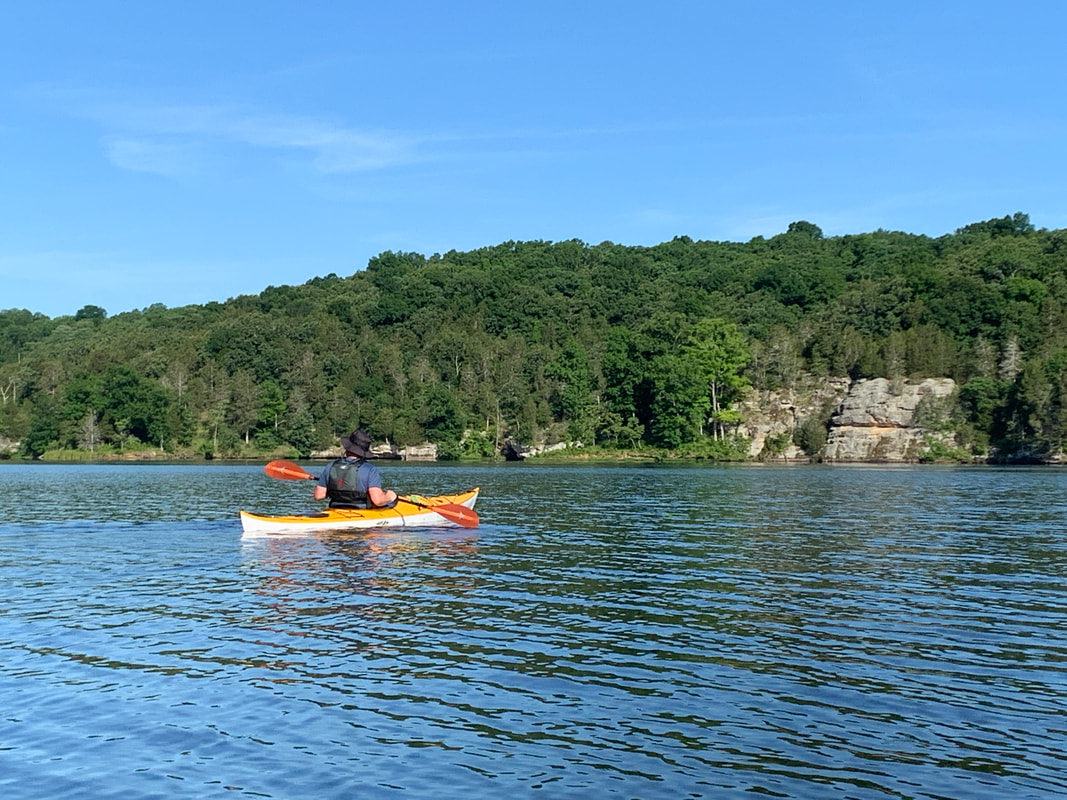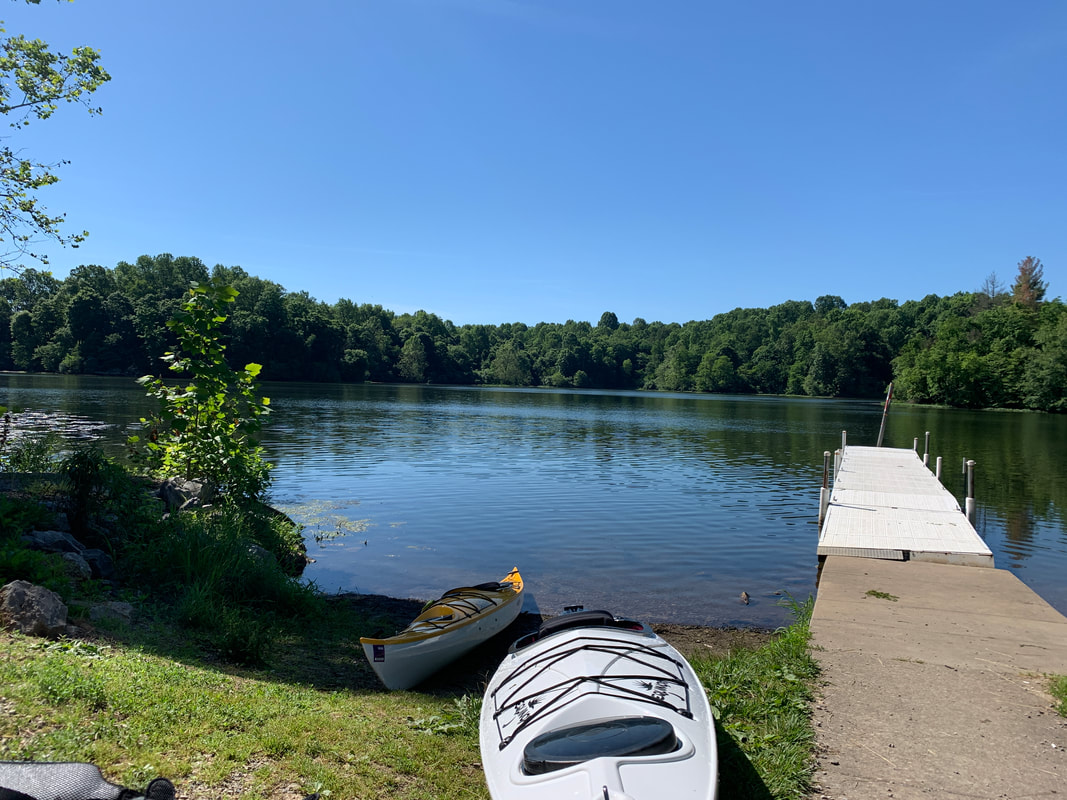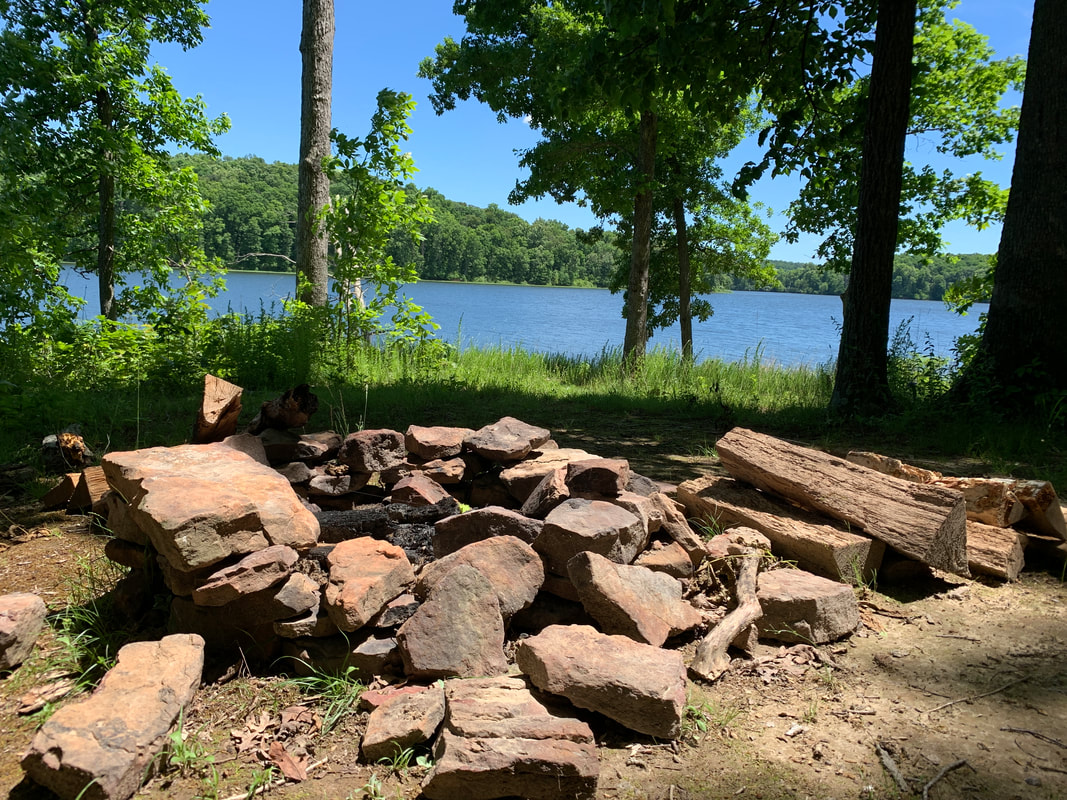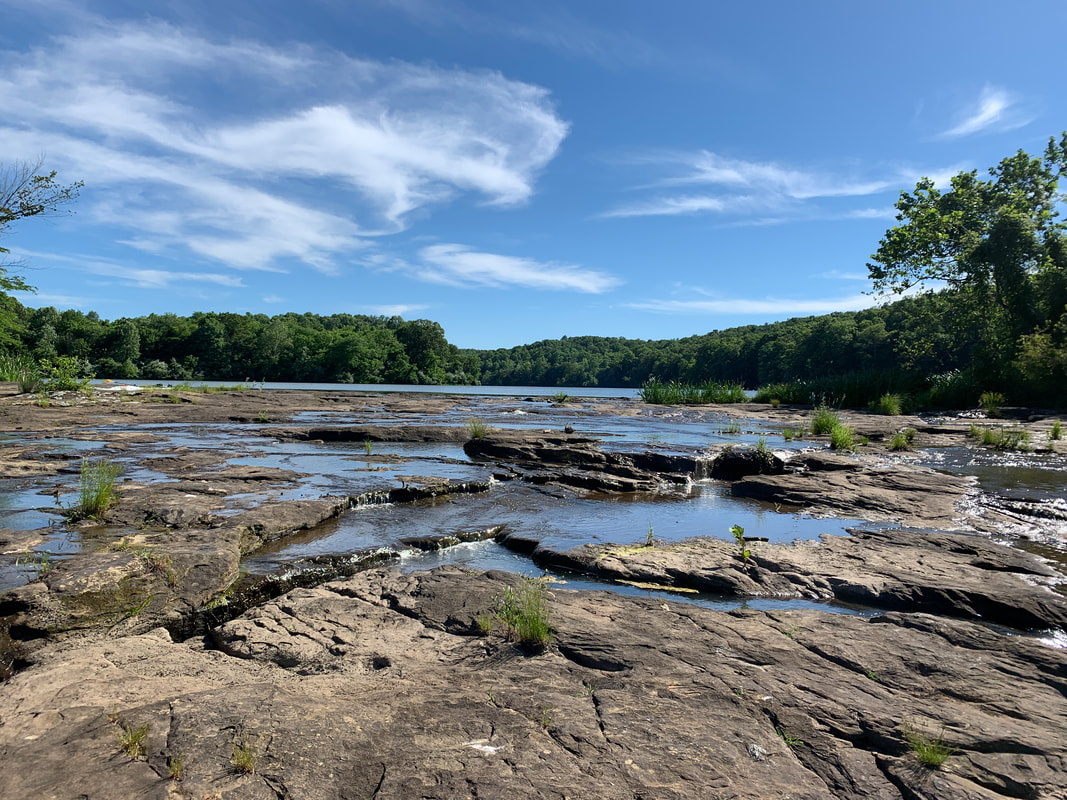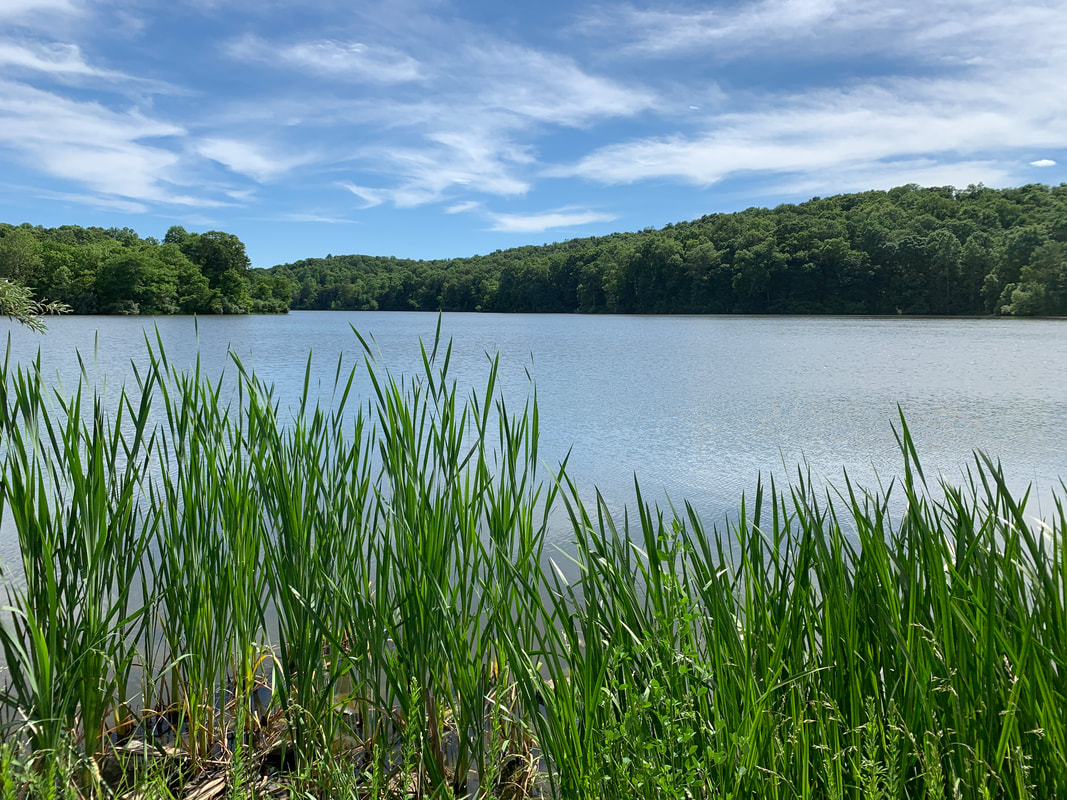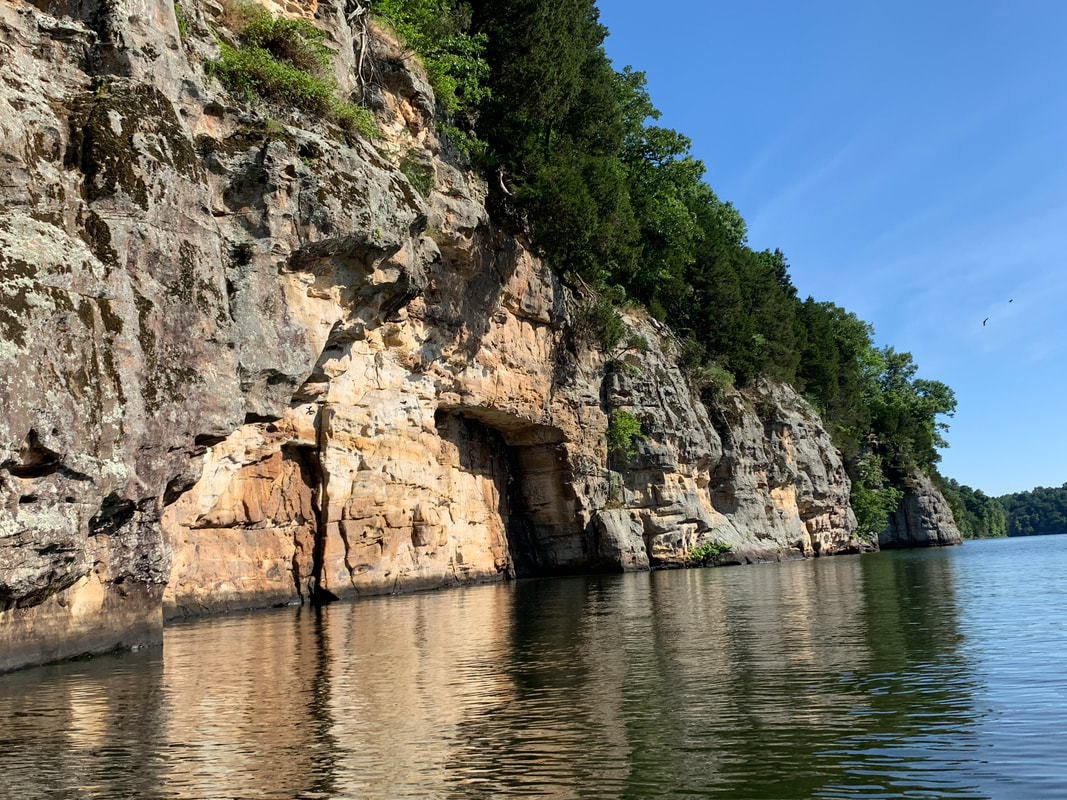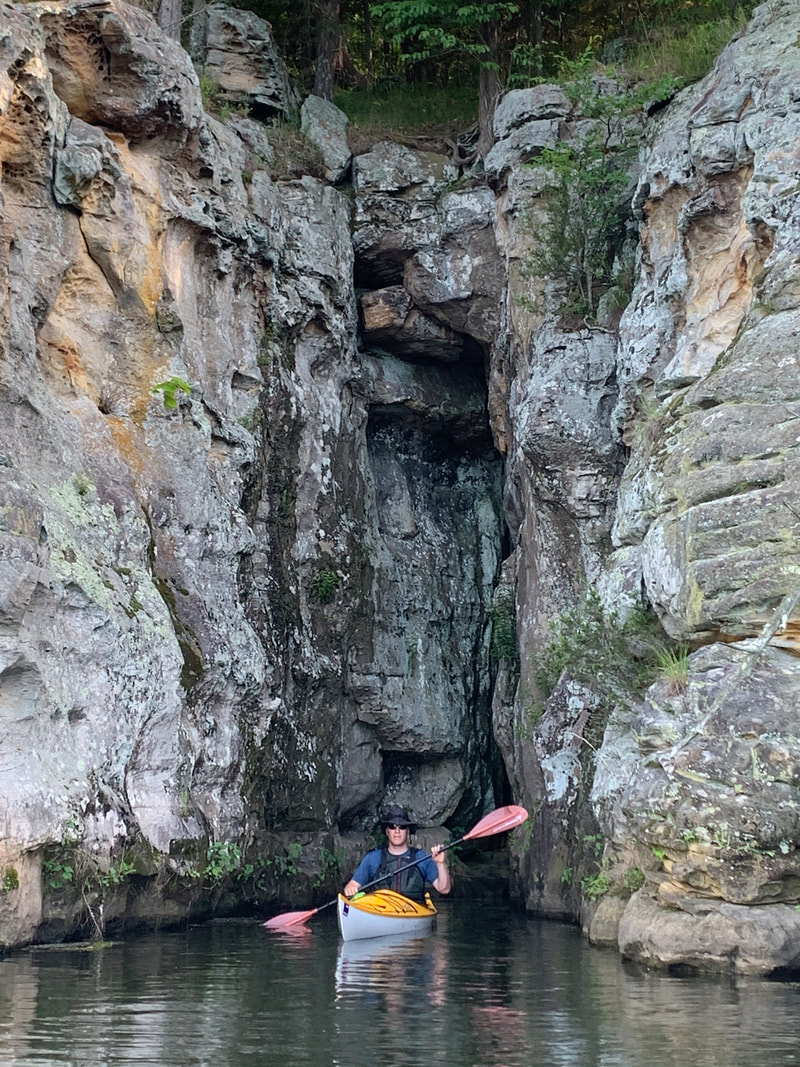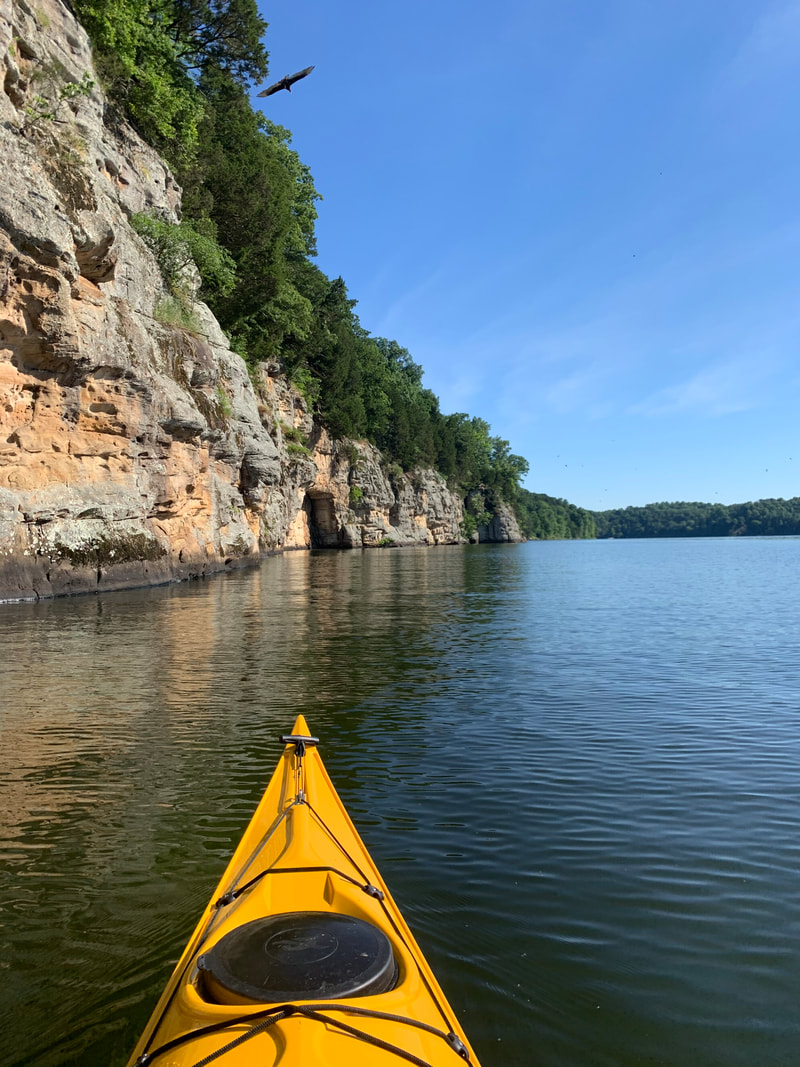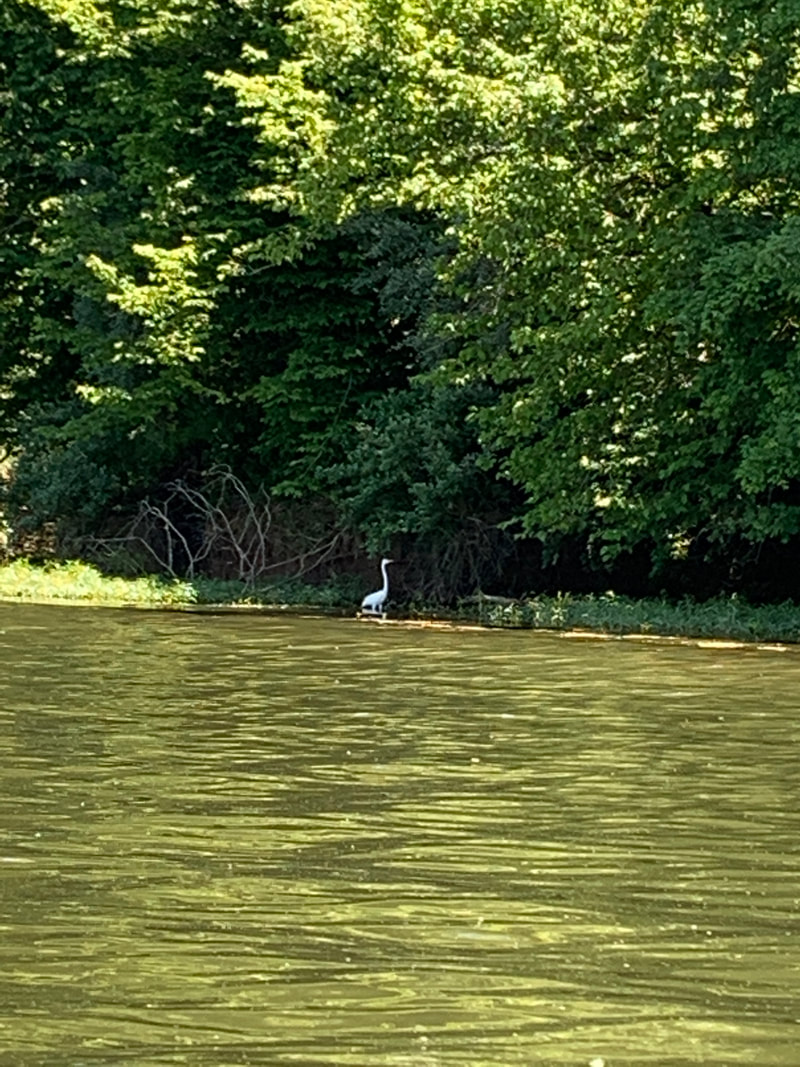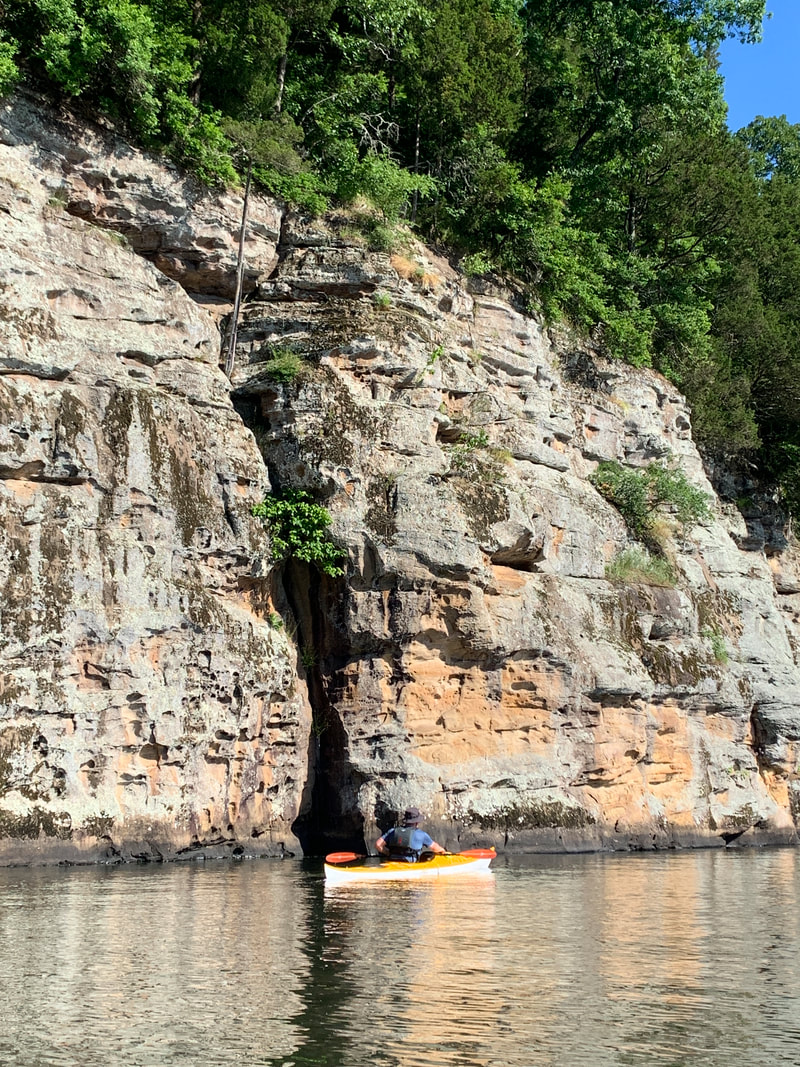Kayaking Shawnee National Forest
Shawnee National Forest is known for its breathtaking rock features, and you mustn't miss out on the view of these from the water. Southern Illinois is peppered with lakes of all sizes for the eager paddler to enjoy. While not all of these have backcountry camping, with a little research, you can find locations to pop up your tent and stay a while.
Paddling Cedar Lake & "Little Cedar Lake"
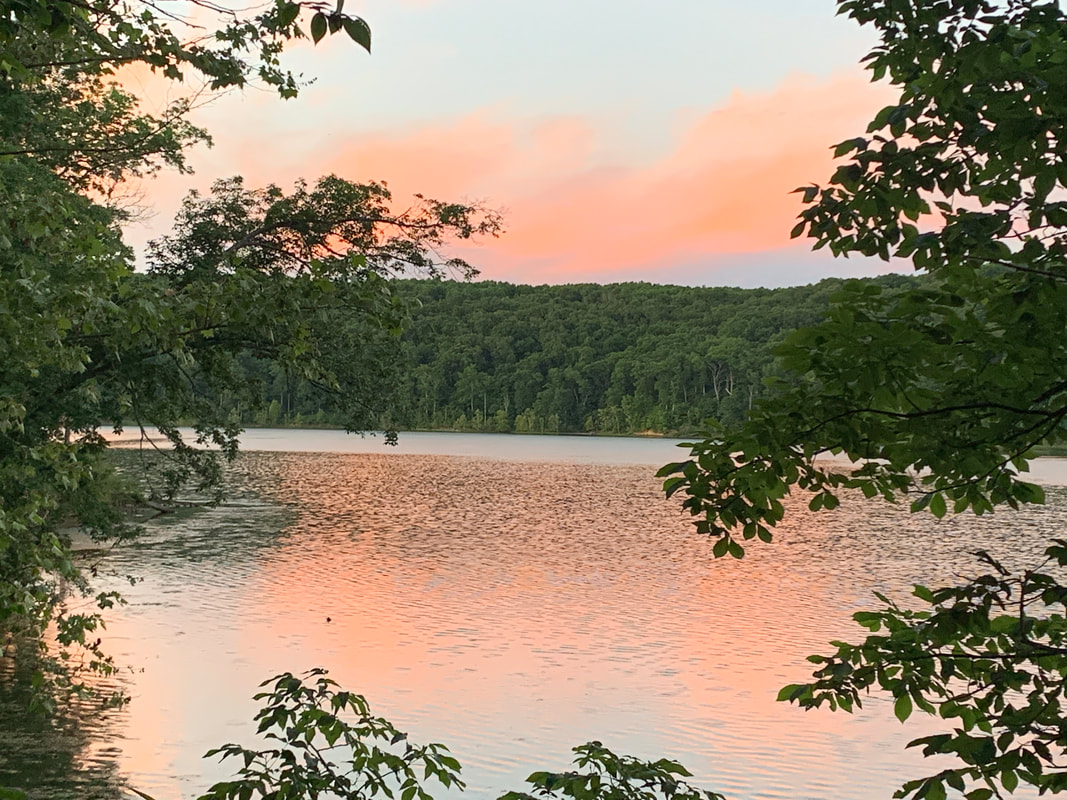 Sunset on Cedar Lake, Shawnee National Forest
Sunset on Cedar Lake, Shawnee National Forest
Key Features:
-Numerous fingers to explore
-Adjacent backpacking opportunities
-Fewer crowds or at least space to spread out and isolate
-Natural rock features of high cliffs & a rock dam
-Active avian wildlife
-Numerous fingers to explore
-Adjacent backpacking opportunities
-Fewer crowds or at least space to spread out and isolate
-Natural rock features of high cliffs & a rock dam
-Active avian wildlife
I must admit, we were wildly unprepared for what we found when paddling Cedar Lake. We hastily looked for a new place to kayak within a few hours drive from home when the weather forecast called for cooler weather the last weekend of May as we kicked off the summer. Our first clue to what awaited us came from the woman we met in the parking lot as we unloaded at the boat dock. She identified herself as an "UPPer" (so she had immediate credibility with us) and told us, "Oh, you're really going to love this lake." She was right.
We were drawn to the lake because it has numerous fingers. This allows for a lot of exploring while giving a fairly isolated feel. It also ensures that no matter the wind, kayakers always feel safe and stable, or at least close to hugging a shore line if the need were to arise. The limits on motors meant it was just going to be kayakers and anglers enjoying Cedar Lake.
The map showed an area that the River to River Trail crosses dissecting the big lake into a smaller body of water creatively name... "Little Cedar Lake." Our intuition about backpackers told us that this would be an ideal spot for some waterfront camp sites, so our main goal was to explore this area and cross over into the smaller lake via this natural rock dam. However, we found so much more to explore when we quickly overshot the first finger of the lake and paddled on and around the south eastern portion of Cedar Lake. Here we found more isolation and great camp sites nestled into the shoreline.
The waterfowl made paddling a never-ending day of surprises as snowy egrets, great blue heron, bald eagles, swallows, muskrats, and other birds actively fished and flew around us along the shoreline and overhead. Just as you paddled close enough for a good picture they would take off spreading their enormous wings effortlessly rising into the sky and circling overhead. It was a "bluebird sky" day, but the fish were really jumping and the birds were calling in perfect summertime bliss.
When we finally did make it back to the dam at Little Cedar Lake, we found it hopping with people out basking in the sun and exploring the numerous channels of this interesting, rare water feature. Water flows from the small lake into the large lake via a rocky set of channels in a natural rock dam. Here are several established campsites for locals, backpackers, and paddlers. If it wasn't a busy weekend, it would make an excellent place to stay, but we paddled on to more seclusion and the gift of a stocked wood pile back around the eastern finger. Here we enjoyed a picture perfect sunset, peaceful fire, and bright sunrise.
Expect the fishermen to wake you up on this popular fishing lake, so with an early rise, we set off to explore the keystone feature of this lake: the cliff faces on the western shore. We crossed some bigger water, which our boats easily handled, but many recreational kayaks would not be up for. In typical Southern Illinois style, we explored the enormous rock faces full of cracks and crevices and home to numerous swallows, wasp nests, and even a buzzard rookery. This was our favorite event of the paddle. We sat and watched the swallows swoop and dive catching bugs and returning to their nests etched into the cliff face. The swooped and swarmed like fighter jets over our heads, trying to keep pace with the frenzied calls of their young to "Feed me!"
Cedar Lake quickly rose to one of our top places to kayak and we can't wait to return to explore more and experience the different seasons on less crowded days.
We were drawn to the lake because it has numerous fingers. This allows for a lot of exploring while giving a fairly isolated feel. It also ensures that no matter the wind, kayakers always feel safe and stable, or at least close to hugging a shore line if the need were to arise. The limits on motors meant it was just going to be kayakers and anglers enjoying Cedar Lake.
The map showed an area that the River to River Trail crosses dissecting the big lake into a smaller body of water creatively name... "Little Cedar Lake." Our intuition about backpackers told us that this would be an ideal spot for some waterfront camp sites, so our main goal was to explore this area and cross over into the smaller lake via this natural rock dam. However, we found so much more to explore when we quickly overshot the first finger of the lake and paddled on and around the south eastern portion of Cedar Lake. Here we found more isolation and great camp sites nestled into the shoreline.
The waterfowl made paddling a never-ending day of surprises as snowy egrets, great blue heron, bald eagles, swallows, muskrats, and other birds actively fished and flew around us along the shoreline and overhead. Just as you paddled close enough for a good picture they would take off spreading their enormous wings effortlessly rising into the sky and circling overhead. It was a "bluebird sky" day, but the fish were really jumping and the birds were calling in perfect summertime bliss.
When we finally did make it back to the dam at Little Cedar Lake, we found it hopping with people out basking in the sun and exploring the numerous channels of this interesting, rare water feature. Water flows from the small lake into the large lake via a rocky set of channels in a natural rock dam. Here are several established campsites for locals, backpackers, and paddlers. If it wasn't a busy weekend, it would make an excellent place to stay, but we paddled on to more seclusion and the gift of a stocked wood pile back around the eastern finger. Here we enjoyed a picture perfect sunset, peaceful fire, and bright sunrise.
Expect the fishermen to wake you up on this popular fishing lake, so with an early rise, we set off to explore the keystone feature of this lake: the cliff faces on the western shore. We crossed some bigger water, which our boats easily handled, but many recreational kayaks would not be up for. In typical Southern Illinois style, we explored the enormous rock faces full of cracks and crevices and home to numerous swallows, wasp nests, and even a buzzard rookery. This was our favorite event of the paddle. We sat and watched the swallows swoop and dive catching bugs and returning to their nests etched into the cliff face. The swooped and swarmed like fighter jets over our heads, trying to keep pace with the frenzied calls of their young to "Feed me!"
Cedar Lake quickly rose to one of our top places to kayak and we can't wait to return to explore more and experience the different seasons on less crowded days.
